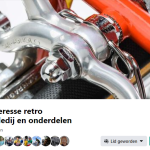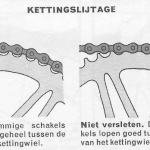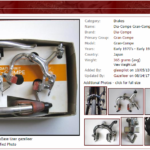The frame is the backbone of the racing bicycle and the heaviest part. Although with the use of carbon heavy has become a relative term. But we will only talk about steel in this article.
Stiff and strong but not too
The classic bicycle frame consists of 2 triangles that are subjected to tension and compression and are composed of tubes. These tubes are called the head tube, top tube, down tube, seat tube, chainstays and seatstays (see below).
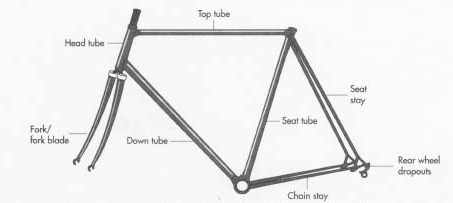
All these tubes are hollow and must be strong and stiff as well as light, but it is not that simple. A frame that is too light can be slack and swish, a frame that is too strong or stiff can make you notice every bump in the road, which makes cycling extremely unpleasant.
So you can imagine that from the beginning there has been a constant evolution to ensure that the frame meets the above requirements as well as possible.
The most commonly used material before the emergence of aluminum and later carbon was steel. Steel has the following advantages: great strength and stiffness, easy manufacturability, high hardness, high wear resistance and low price. The biggest drawbacks are the heavy weight and the fact that it rusts quickly.
In the past you could find a bicycle repairman in every city or municipality who built his own frames. An office that, with few exceptions, has almost completely died out and has been replaced by the Asian companies that assemble carbon frames for all major bicycle brands.
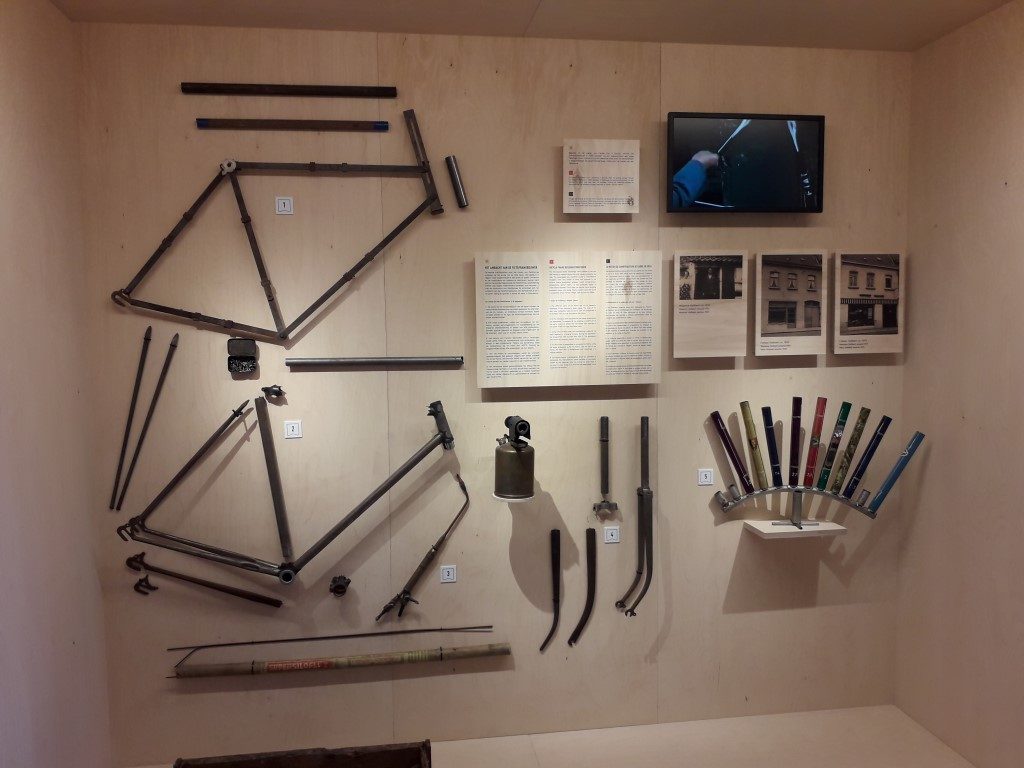
The tubes of the frame
Round tubes were used as standard for the top tube, down tube, seat tube and head tube. Time trial bikes usually used oval or flattened tubes for better aerodynamics and increased stiffness and strength. Columbus Air and Max are some examples. These oval tubes are also called oversized tubes and are typical for aluminum bicycles.
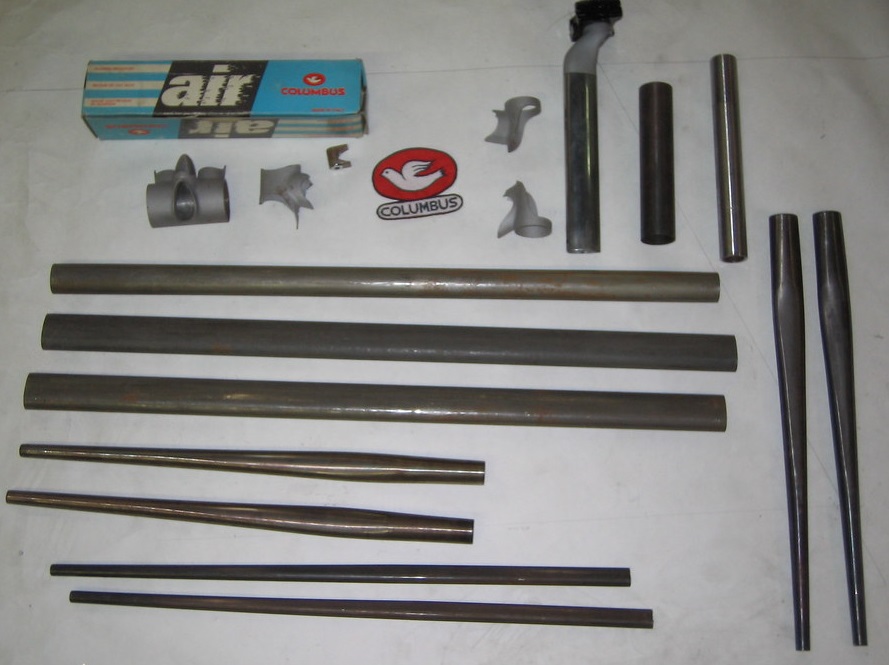
The chain stay is thin and oval because this tube is mainly loaded in a vertical direction and the load is greatest near the bottom bracket.
The upright rear fork is subjected to bending at the height of the brake cam, so that it is made thicker there. Towards the saddle clamp and the rear dropouts it tapers out again.
To obtain more rigidity, the tubes of the upright and horizontal rear fork are connected by means of a bridge. Sometimes it happened that this bridge was omitted at the chain stay as in the photo below.
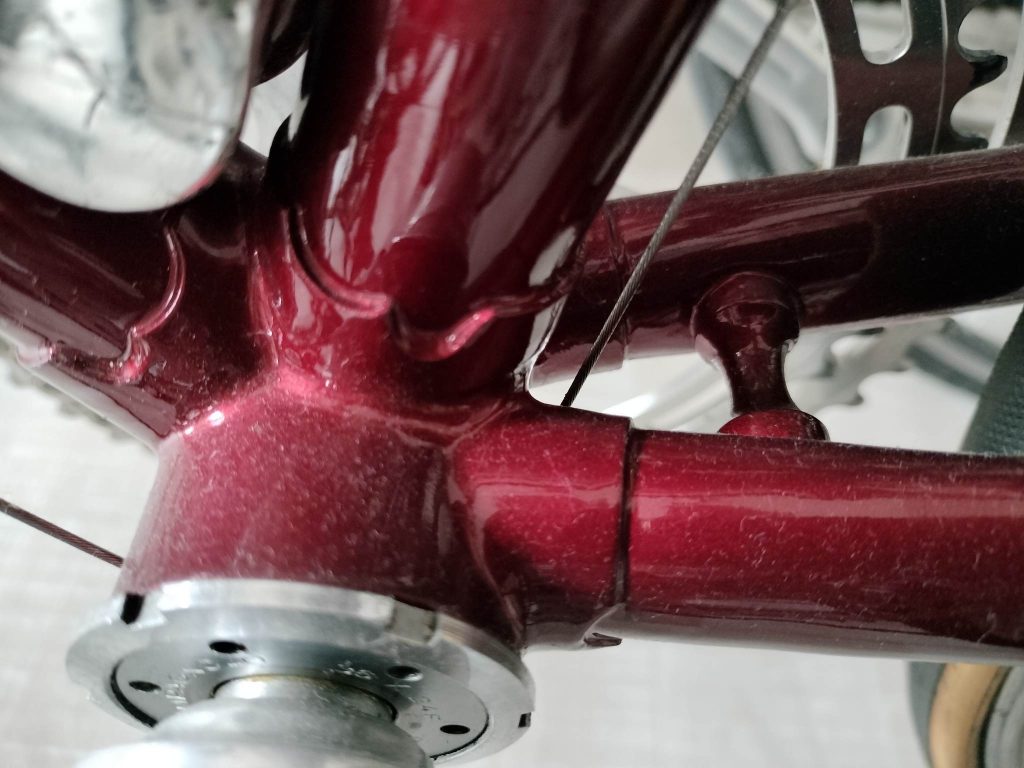
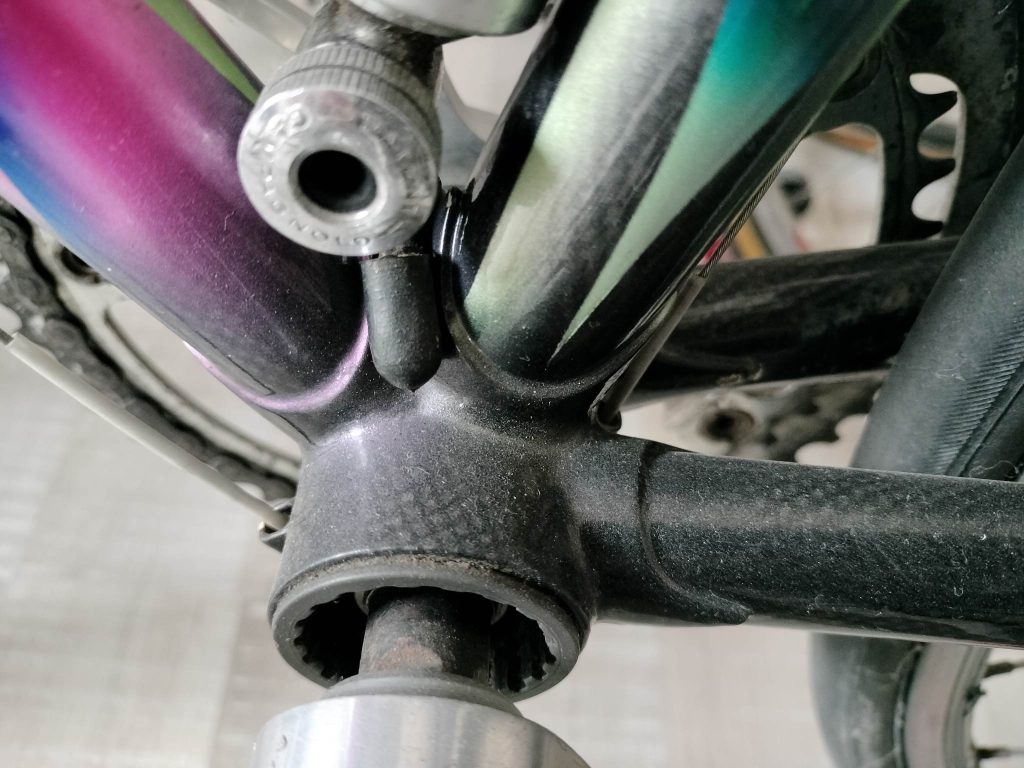
In addition to the extra strength, the bridge at the seat stays serves to attach the rear brake.
At Gazelle, the swingarm of the upright rear fork has been replaced by a butterfly man, making it easy to recognize a Gazelle frame.
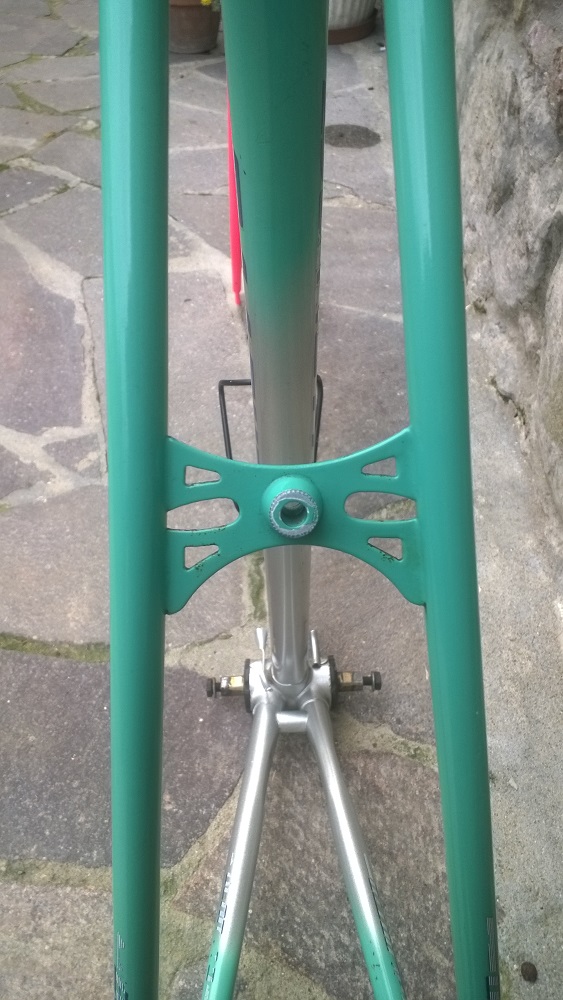
Reynolds, Columbus, Tange, …
The bicycle maker or constructor bought his tubes from a tube supplier and then built his frames in his workshop. The most important and best-known suppliers were and still are
- from England: Ti-Reynolds,
- from Italy: Columbus and Oria,
- from Japan: Ishiwata and Tange,
- from France: Vitus and Super Carbonite.
Usually the tubes were engraved by the suppliers: with Columbus a dove, with the rest a number. Once the tubes have been painted, you can no longer see this engraving, which is why the suppliers provided a small sticker with the type of tube on the standing tube. Always a handy tool to know whether you have bought a decent racing bike or rather a simple touring bike.
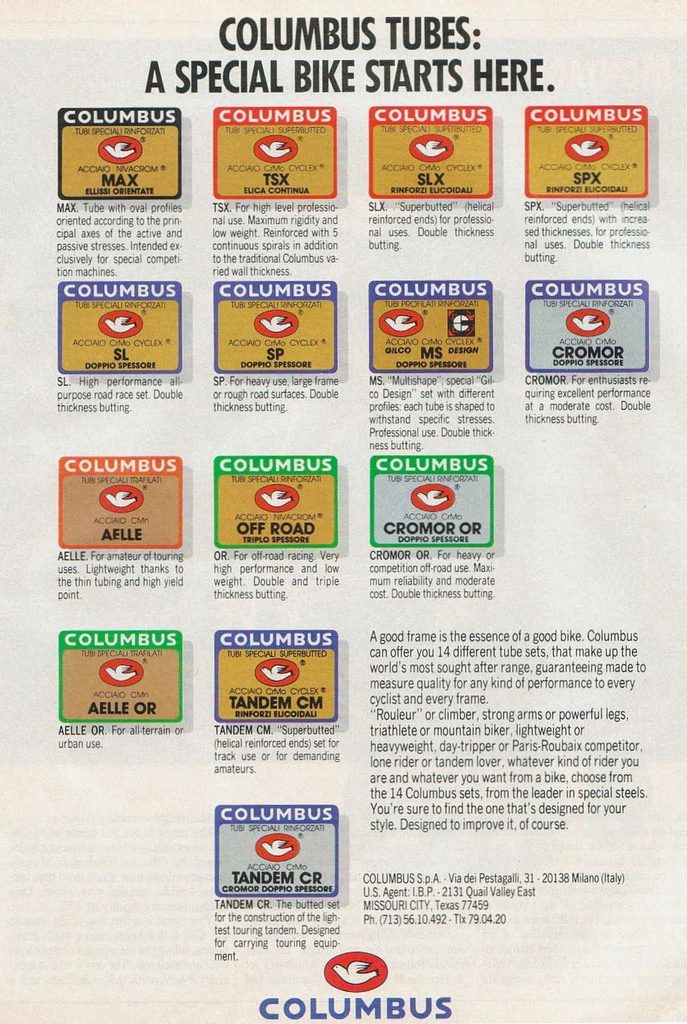
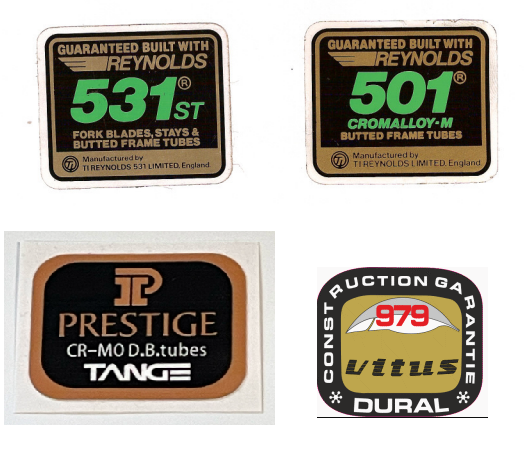
Welded and drawn tubes
As mentioned above, the tubes are hollow to be as light as possible. They are welded or drawn seamlessly.
The welded tubes were commonly used for regular bicycles or cheaper touring or racing bicycles. The starting point is a strip of sheet steel that is rolled into a tube, after which the seam is welded and ground to obtain a smooth surface. This is the cheapest way to manufacture frame tubes.
Tubes made of high-quality steel alloys and therefore from the better and more expensive racing bikes were and still are drawn seamlessly. This allows tubes with a much thinner wall thickness to be produced and that is what it is all about.
It goes without saying that a tube with seams can never be as strong as a seamless tube. In addition, the tubes are drawn cold because the qualities can be negatively affected by too high temperatures.
Butted tubes
Because the tubes do not have to be equally strong everywhere, the so-called butted tubes where the ends are thickened. The tubes are put together by means of lugs at the ends, so that the material in the lugs must be thicker to obtain a firm connection.
The rest of the tube (not at the level of the lugs) is thinner with the butted lugs, which saves material. There is single butted, double butted and triple butted.
- With single butted tubes, only 1 end of the tube is thickened
- With double butted tubes, both ends are thickened, the wall thickness of the ends has the same thickness
- With triple butted tubes, just like with double butted tubes, the ends are thickened, but the wall thickness of both ends is different
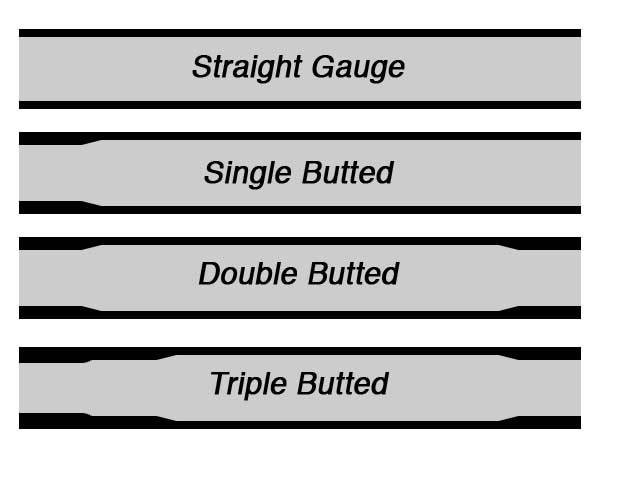
In the past, mainly 2 types were used as a steel alloy: manganese molybdenum and chromium molybdenum. The popular Reynolds 531 has been the standard for many years since 1935 and is an example of manganese molybdenum steel where the number 531 stands for the proportions of manganese molybdenum and carbon in the alloy.
Reynolds 753 were the lightest tubes for many years with a wall thickness of only 0.7mm at the ends and 0.38mm in the middle. Competitors also marketed very light tubes such as the Columbus SL (strada leggera) and the Ultimate Superlight from Tange.
Columbus also experimented with hexagonal tubes where the tube was no longer round on the outside but hexagonal (the Gilco design profiles). These tubes were used with the Colnago Master.
Extra reinforcements were also sometimes made inside the tube in the form of ribs. This, of course, at the level of the lugs and the places that were most stressed, such as the bracket.
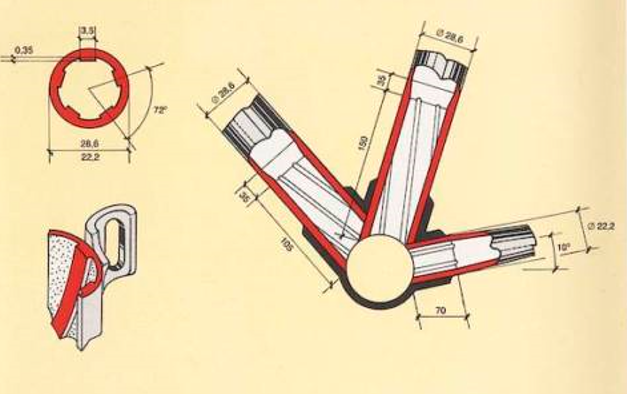
With these butted tubes it was possible to make frames that barely weighed 2 kg. Extremely light but still a huge difference with carbon frames that weigh only 700-900 grams.
Even today, steel frames are still made with the newer state-of-the-art alloys that are even lighter than their predecessors. The lightest steel frame constructed from Dedacciai tubes weighs only 1500 grams, which is comparable to the weight of an aluminum frame.
Recognize butted tubes
Let's say you bought a vintage steel frame or bicycle and you want to know what type of tubing it is made of. If there is a sticker on it, it is not that difficult, although it is always possible with a restored copy that there is another incorrect sticker on it.
You can't see it from the outside anyway unless you have to deal with the Gilco design tubes. You can, however, deduce something from the sound you hear when you tap a tube. The better quality tubes have a clear, high sound.
You can also check the bracket lug on the inside. If you notice welding here, the tube is made of inferior material because the high-quality tubes are only soldered at a lower temperature of 700-800°C. Welding would irreversibly damage some of the lightweight tubes.

